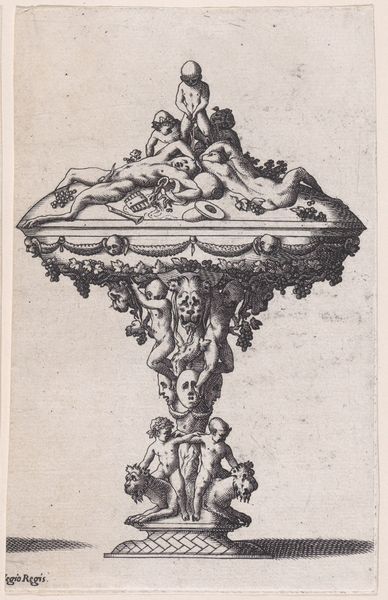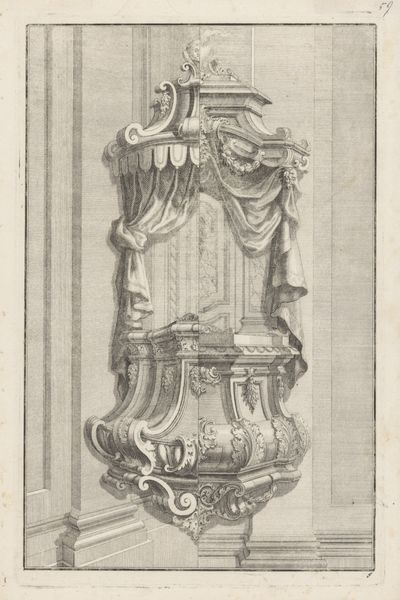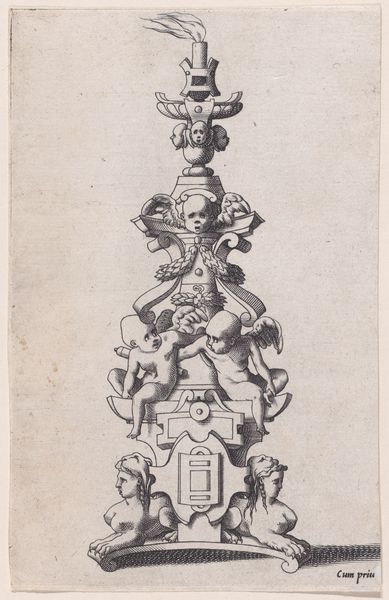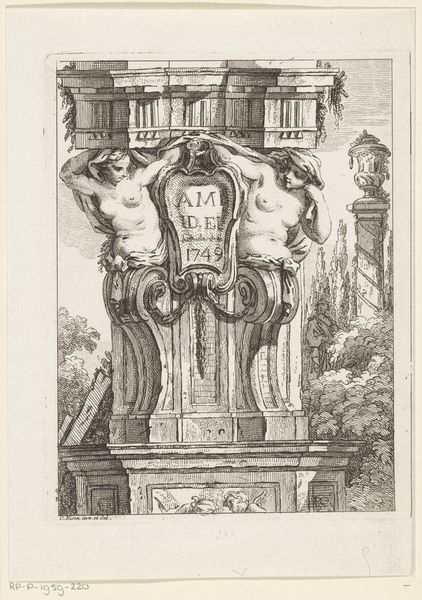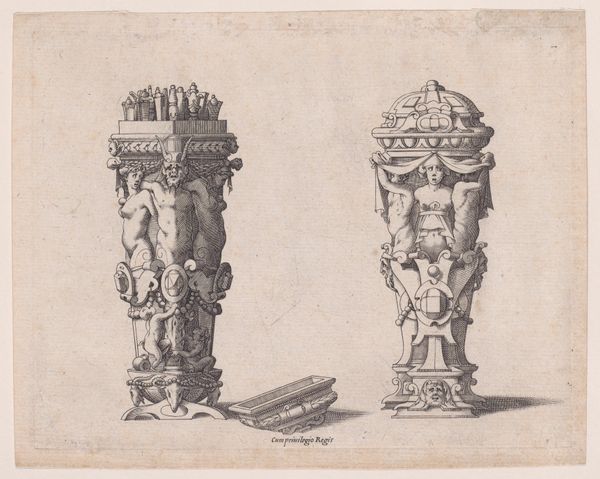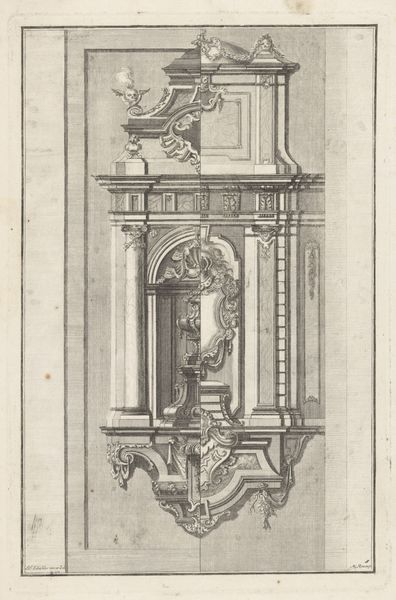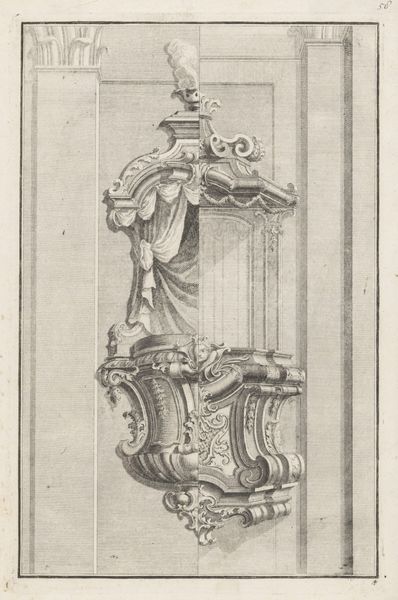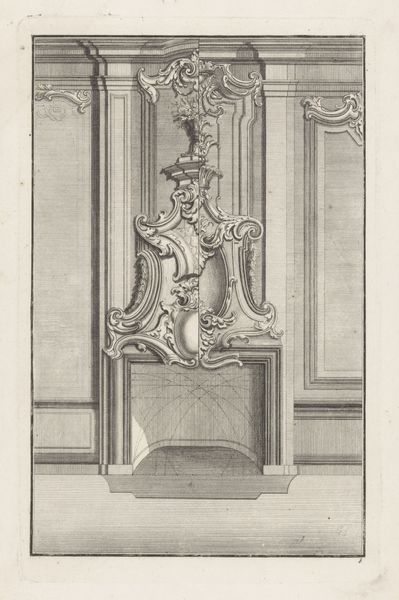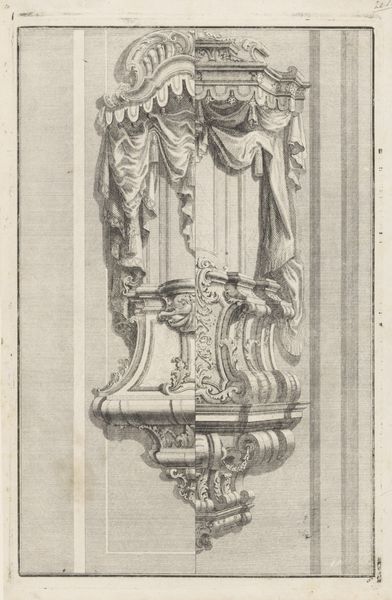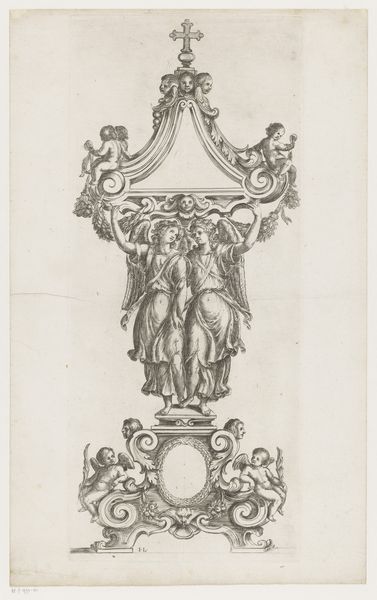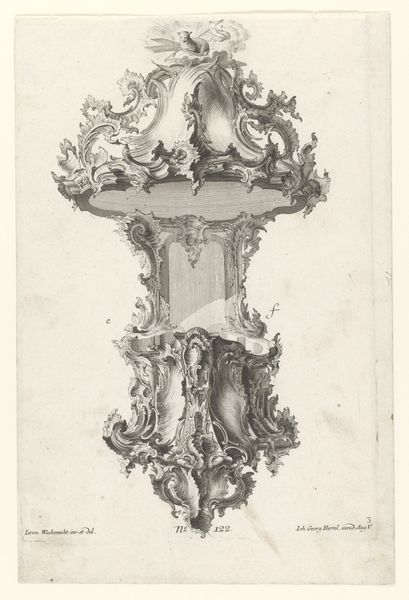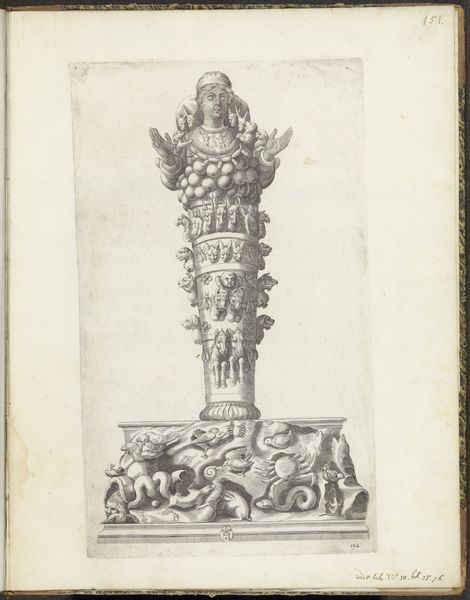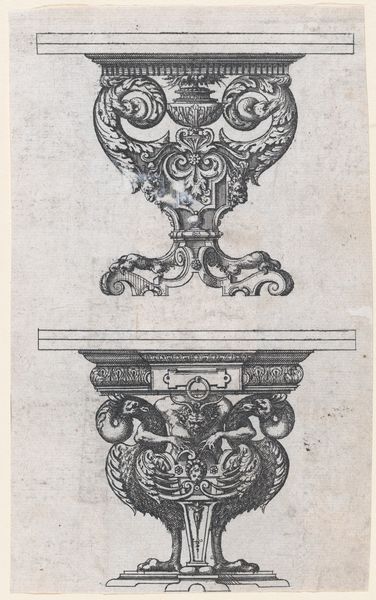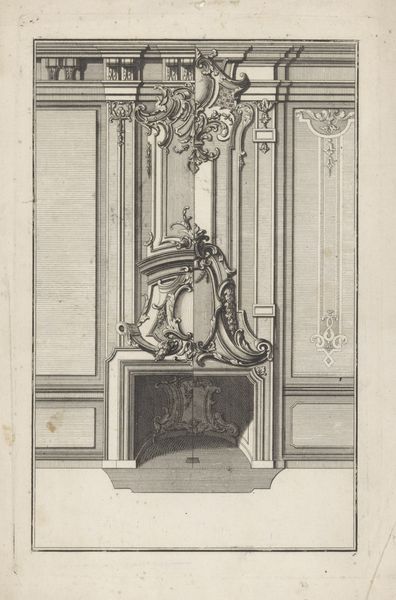
Container with a Satyr (Nécessaire de table) 1525 - 1600
0:00
0:00
drawing, print, engraving
#
drawing
# print
#
mannerism
#
figuration
#
11_renaissance
#
history-painting
#
engraving
Dimensions: sheet: 5 1/2 x 3 1/4 in. (14 x 8.3 cm)
Copyright: Public Domain
Editor: Here we have René Boyvin’s "Container with a Satyr," or "Nécessaire de table," an engraving probably made sometime between 1525 and 1600. I find the starkness of the lines combined with the complexity of the figures very striking. What draws your eye in this piece? Curator: It is the articulation of form that captures my immediate attention. Observe the strategic deployment of hatching and cross-hatching, techniques instrumental in creating depth and texture. This distribution informs our perception of volume. Consider how the satyr's musculature gains definition from this method, contrasting with the more delicately rendered figures beside it. Editor: So you're focused more on how the forms are created than necessarily what they represent? Curator: Precisely. Consider the artist's formal vocabulary. Note the repetitive use of curvilinear forms – the volutes, the garlands, the very contours of the figures – establishing a rhythmic visual cadence. Does this cadence guide your eye, and if so, to what effect? Editor: I think it does, almost like a spiraling effect, guiding me upwards and highlighting details I might have missed otherwise. It also really reinforces the three-dimensional nature of the piece despite being a print. Curator: Indeed. Further, consider the top element of the composition; the symmetrical arrangement of objects and, equally, the calculated asymmetry within the figural grouping contribute to the visual tension inherent in Mannerist aesthetics. Do you discern a philosophical argument being presented here, not through narrative, but through form itself? Editor: I think I’m beginning to see how the balance and imbalances work together to give the artwork energy, rather than just seeing it as a picture of something. Curator: A most astute observation. We must always attend to how an artwork operates aesthetically, separate from narrative considerations.
Comments
No comments
Be the first to comment and join the conversation on the ultimate creative platform.
